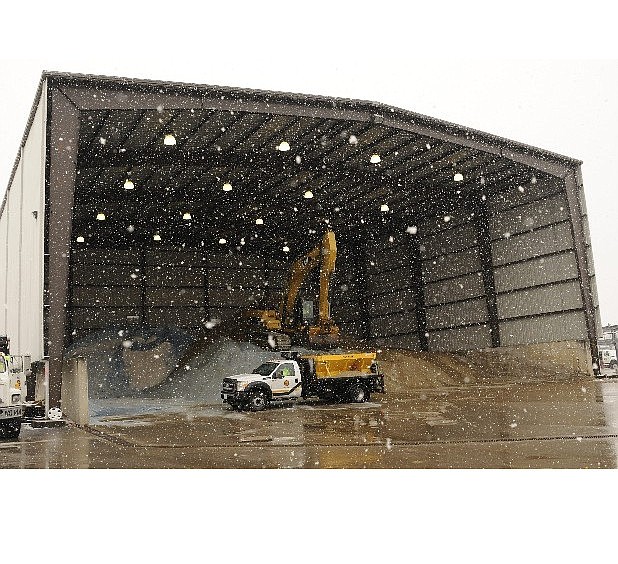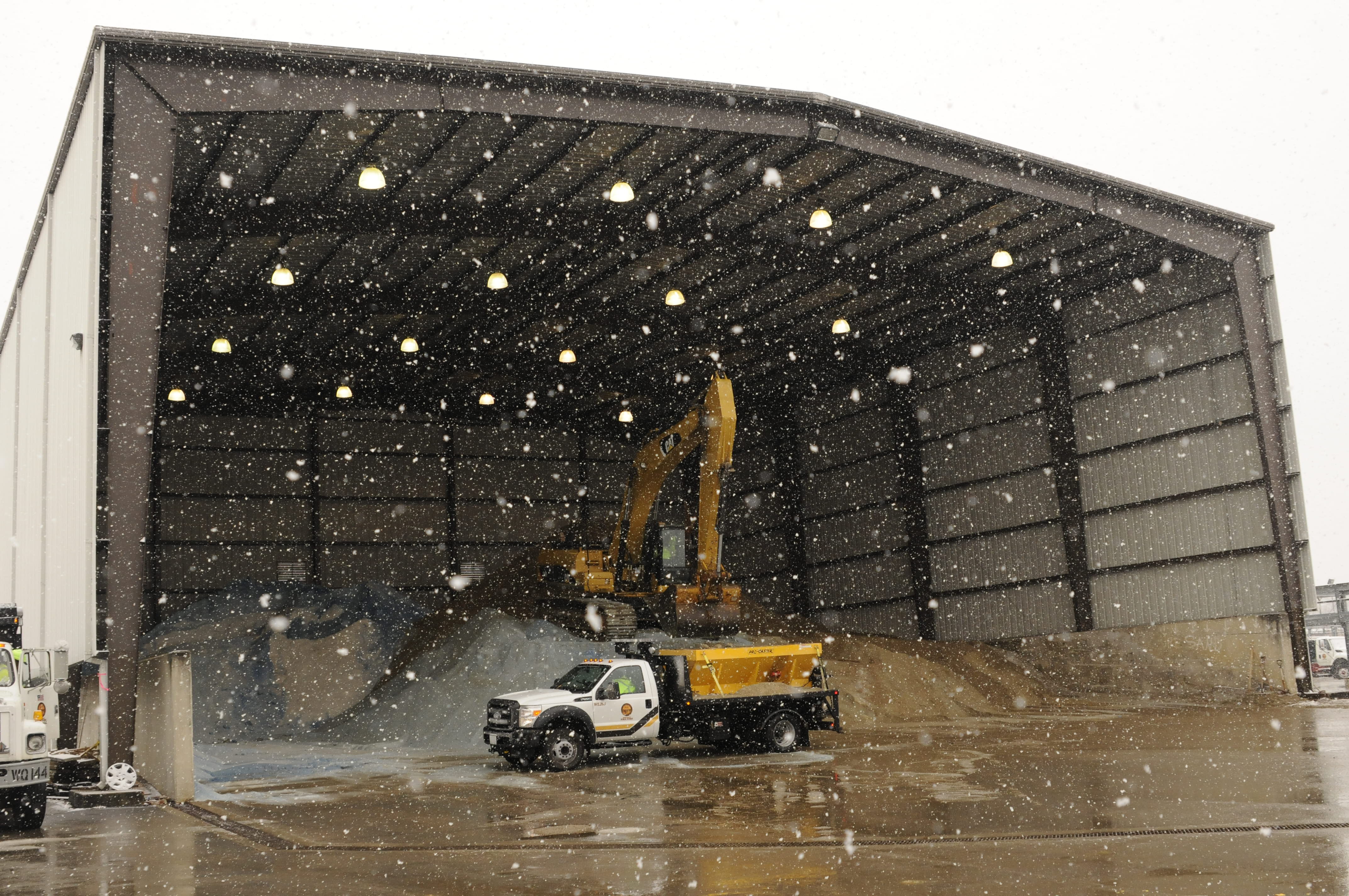Snowy winter hits Chattanooga, Hamilton County governments in pocketbook
Saturday, April 5, 2014
Snow removal costs:Chattanooga:Salt, sand and brine: $317,225Labor: $120,833Equipment: $157,542Total: $595,600Hamilton County:Salt, sand and brine: $112,500Equipment: $39,560Labor: $62,600Total: $214,660Source: City and county government
An inch of snow this winter that paralyzed streets and highways, stranded some children at school and sent vehicles skidding off roads cost Chattanooga and Hamilton County taxpayers nearly $370,000 to clear.
Officials had little advance warning of the sudden storm. The fleet of public works trucks didn't hit the streets until snow already had begun to fall in thick flakes.
Local figures show it took 2,195 hours of overtime within Chattanooga's city limits alone to spread enough salt and sand on the roads to make them navigable again. Meanwhile, there were scores of wrecks, including four sheriff's patrol vehicles and eight school buses stranded or involved in minor collisions.
Two weeks later, when the clouds dumped more than 7 inches of powdery flakes, city trucks sprayed 50,000 gallons of brine on key city streets 24 hours before any icy precipitation hit the ground. Result: many fewer traffic snarls.
By next winter, Chattanooga officials say they hope to have found a way to equip residents with more information to avoid -- as much as possible -- future disasters similar to the Jan. 28 snowpocalypse.
That solution includes $131,000 worth of computer equipment that technicians will install in the city's public works fleet to track where the vehicles spread salt and sand. Then workers will upload the tracking information to the city's website, which will let residents check where the trucks have already cleared the roads.
If all goes as planned, Public Works Director Lee Norris said, the public should be able to monitor the trucks' paths online by the fall. The equipment also will be available to track other types of emergencies, as well as for basic upkeep functions such as street sweeping.
"The [capability] will be something we can be proud of," Norris said. This year's winter "demonstrated the need for that kind of tool."
Emergency response officials say this new technology, which the City Council approved in March, could eliminate some traffic crashes if the public knows what untreated areas to avoid.
"A lot of our wrecks involve motorists who don't know if a road is cleared," said Amy Maxwell, Hamilton County's emergency services spokeswoman. "We saw that a lot this year. As a result, they caused a bottleneck that was in the way of [the Tennessee Department of Transportation] and public works trying to clear the roads."
At least one city official said he would like to see the technology in action to justify the cost.
"You always have to put the money in one hand and put the service in the other and see which one weighs more," said Councilman Chip Henderson. "If it allows our citizens to go online and get home safely it's worth it. [But] it's one of those things that have to be used to be worth it."
It could be 10 years before there's another winter like 2014, but Henderson said if the technology has multiple uses it still could be worth the money.
Overall, it's not cheap to clear the streets when it does snow.
Chattanooga's winter snowfall of 8.4 inches -- twice the average over the past 30 years -- cost city and county taxpayers a total of $810,260. That cost includes salt, sand and brine, employee overtime hours and use of public works equipment.
But Chattanooga spent almost double what Hamilton County laid out.
Officials say winter weather is an annual budget expense and in the city limits, officials stockpile 4,000 tons of sand and salt each year. While the city didn't track the cost of last winter's damage, this year was significantly higher because of the amount of snowfall.
When temperatures dipped into the single digits and wind chills sank well below zero on Jan. 6, the city used 400 tons of salt and sand on 2,640 miles of road. On Jan. 14, city officials sprayed brine on the roads, while county officials decided not to.
Hamilton County spokesman Mike Dunne said if there is a National Weather Service forecast for ice or snow, county officials first send crews to spray brine mix on problematic roads such as Robert's Mill Road and the W Road. If the prediction comes true, county trucks then start to target the priority roads.
In East Ridge, administrative assistant Amanda Miller said the cost of the storms in January and February to the city's streets, sanitation and traffic control departments was $13,938 in January and $20,512 in February.
Hamilton County spent nearly $215,000 on snow cleanup. County officials said they've also changed some of their operations in response to ambulances stranded this winter.
First responders and law enforcement are instructed to call ahead to 911 and warn dispatchers of impassible roads, and to then give paramedics instructions on how to reach the emergency scene, Maxwell said. The city's new technology could speed up that response time, she said.
With spring's arrival, city officials are restocking their salt and sand piles for next year. Last week, the City Council gave the public works department approval to buy $41,000 worth of salt. This summer, Norris said ,he'll buy another pile when the cost of materials is at its cheapest.
Contact staff writer Joy Lukachick at jlukachick@timesfreepress.com or 423-757-6659.

